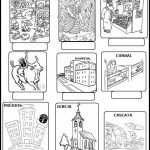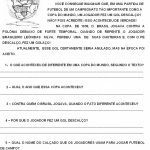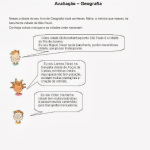I enjoyed the activity, I will work with my students on some questions.
Nature is a very important topic that needs to be valued by students. Therefore, it is important that teachers apply activities on natural and modified landscape for early childhood education. The first is synonymous with nature. This type of landscape does not undergo anthropic modification, that is, through human intervention. Furthermore, nature may be absent from the humanized landscape. This is also called a modified or artificial landscape. This occurs as a result of human action.





QUESTION 1
List the second column from the first based on the concepts of natural landscape and cultural landscape:
Column 01
(1) Natural Landscape
(2) Cultural Landscape
Column 02
( ) Environmental park created in the urban space of a city
( ) Environmental reserve in rural area
( ) Farm hotel reserved for tourism
( ) Equatorial forest not occupied by humans
( ) The street of an industrialized city
( ) Area of urban space dedicated to the promotion of cultural practices
QUESTION 2
The landscape reproduces the expression of various times, that is, the historical context in which it was built. It is characterized by elements that were inserted over time and that coexist with the current ones. Constructions, houses, buildings, warehouses, square streets and their distribution in space make up the elements of a landscape and can undergo transformations or remain unchanged.
MARTINS, D. et al. Society and everyday geography: fundamentals. Volume 01, 3rd ed. São Paulo: educational scale, 2013. p.27
Given this perspective, it can be said that:
I. Every landscape results from the transformation brought about by human action.
II. The landscape expresses the history of social and natural practices.
III. The elements of a landscape can change over time.
IV. The construction of geographic space corresponds to a transformation of landscapes.
The statements are correct:
a) I and II
b) II and III
c) II, III and IV
d) I, III and IV
e) All are correct.
QUESTION 3
The landscape holds within itself a combination of elements from the present and the past. More than a purely visual expression, it often results from an interaction between the human being and the environment, which can even reach an emotional aspect.
In this sense, we can consider the cultural landscape as:
a) mechanical instrument of perception of reality.
b) producer of individually perceived speeches.
c) direct reflection of human understanding.
d) result of subjective meanings.
e) visual reproduction of social affective activities.
Did you like it? Share this post on your social network
 Activities on Rural and Urban Areas
Activities on Rural and Urban Areas
 Text Interpretation Activities to Print
Text Interpretation Activities to Print
 School activities about carnival
School activities about carnival
 Landscape Geography Assessments
Landscape Geography Assessments
 Geography Activities for 3rd, 4th and 5th year
Geography Activities for 3rd, 4th and 5th year
 Geography test assessment
Geography test assessment
I enjoyed the activity, I will work with my students on some questions.
This site uses Akismet to reduce spam. Learn how your comment data is processed.

